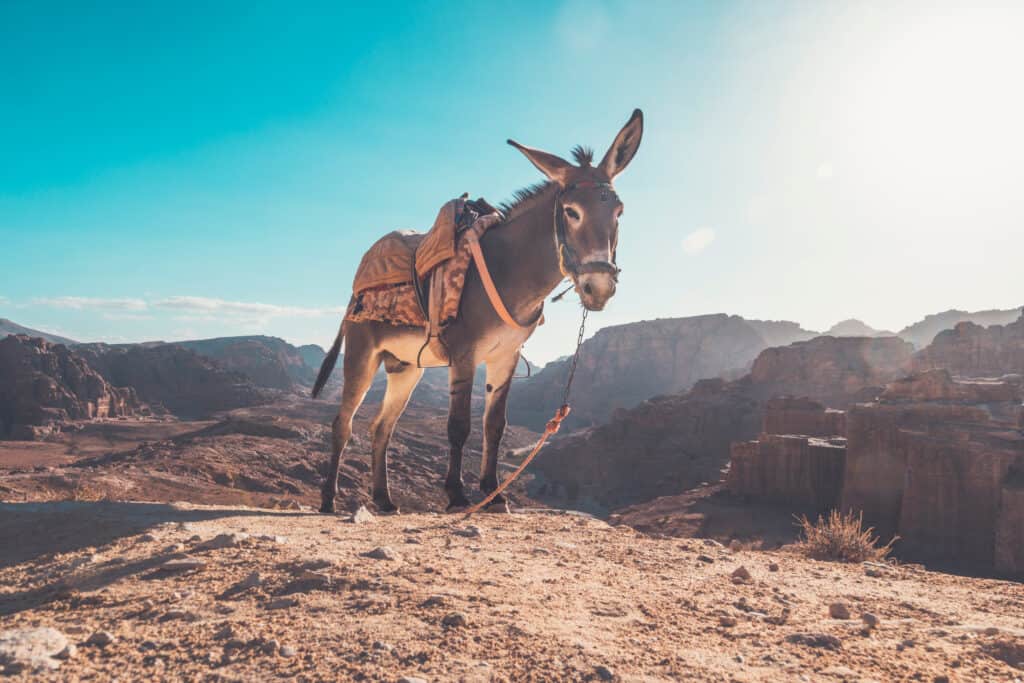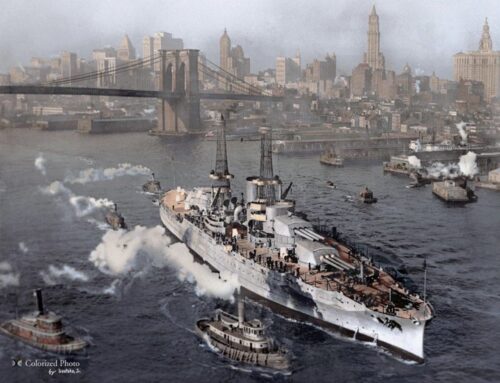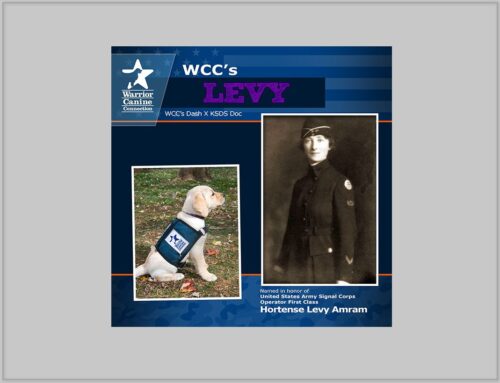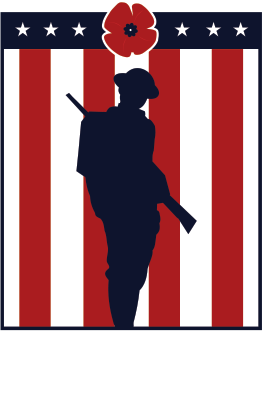The Unsung Animal Heroes of World War I
Published: 6 June 2025
By Kellianne Matthews
via the America Online website
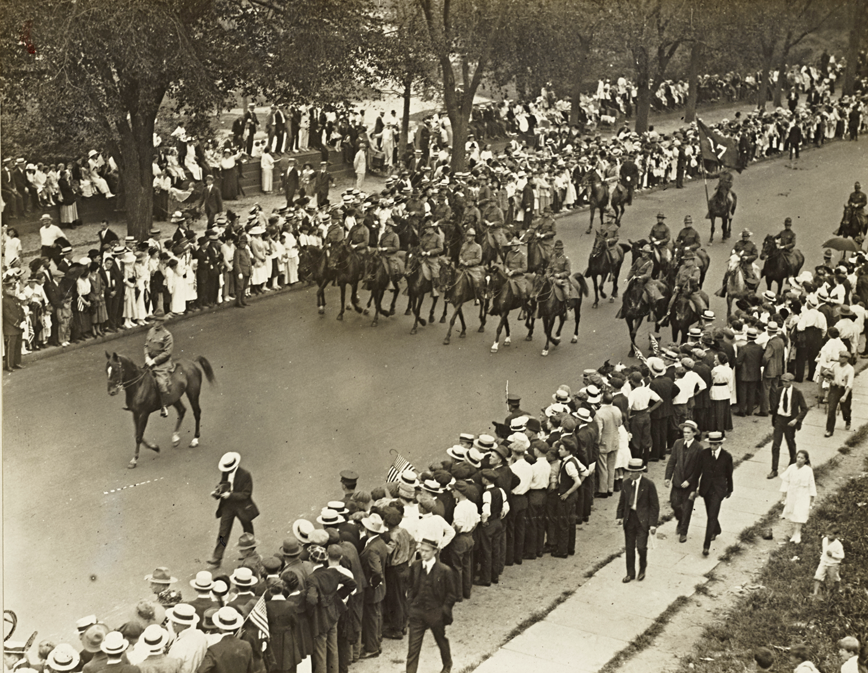
send_off_parade_in_New_York_City_Fifth_Avenue_30_Aug_1917
American Expeditionary Forces cavalry units parade down Fifth Avenue in New York, 30 August 1917.
World War I earned the grim title of “the War to end all wars” for a reason: the world had never before witnessed a conflict on such an unimaginable scale. The sheer scale of the conflict felt unreal and completely unprecedented. Not only did it involve numerous nations across the globe, but it also introduced terrifying new technologies. Weapons like gas, tanks, and machine guns, alongside the brutal reality of trench warfare, inflicted catastrophic damage at an alarming level. Around 65 million soldiers fought in World War I, and over 16 million animals served served in various roles during the conflict.
These animals played crucial roles, detecting gas, controlling pests in the trenches, transporting vital supplies, and carrying messages and communications along the front lines. They also served as mascots, boosting morale for soldiers far from home. While we often focus on the human impact of the war, it’s easy to overlook the significant contributions of these animals, many of whom undeniably changed the entire course of the war.
Horses
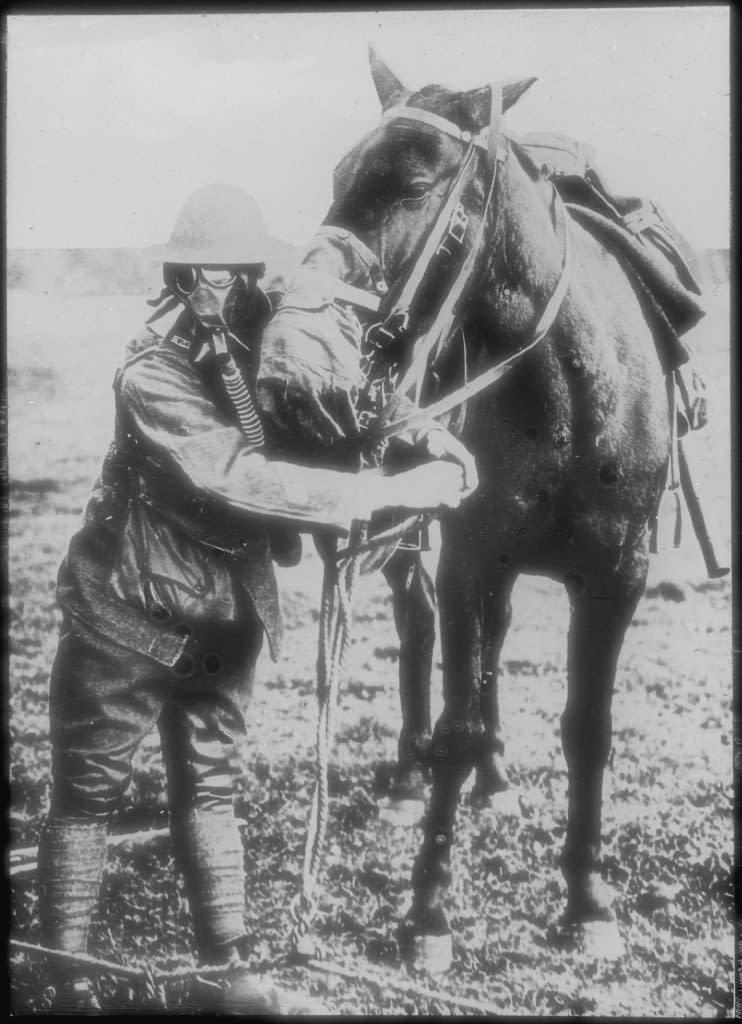
Gas masks helped to protect soldiers and their horses from lethal gases.
©National Archives at College Park / Public domain / Wikimedia Commons
Horses were one of the most important animals in World War I, with somewhere between five and eight million used during the conflict. Even with the advent of new technologies and military vehicles, armies heavily depended on horses to transport troops, supplies, and artillery.
Draft horses were particularly crucial for moving heavy artillery and supplies. Their unique combination of toughness, strength, and mobility made them ideal for navigating challenging terrains. On the Eastern Front, German and Russian forces favored smaller but more resilient native breeds like the Panje horses due to their ability to withstand harsh cold and limited food supplies.
While not all nations prioritized the well-being of their horses, some organizations and countries made considerable efforts. The American Red Star Animal Relief educated American soldiers on equine first aid and provided medical supplies for the animals. Great Britain also took good care of its military horses, having learned from past mistakes during the Boer War. They even extended their veterinary services to France.
Horses from all corners of Europe, from grand estates to rural farms, were pressed into service during the war. Beyond their practical contributions, they also provided companionship and moral support to soldiers, a bond famously depicted in films like War Horse. The real-life inspiration for that film, Warrior, arrived in France in 1914 with his owner, Jack Seely. They bravely served together throughout the war in the British Expeditionary Force, even leading a cavalry charge. Miraculously, both survived the conflict and returned home, living together for another two decades.
Donkeys and Mules
As sure-footed pack animals that thrive in hot climates, donkeys and mules played a vital role in World War I. They were particularly valuable in mountainous regions like Italy, Sinai, and Palestine. At Gallipoli, donkeys were especially indispensable. They tirelessly hauled supplies up steep hillsides and even served as “walking ambulances.” A notable example is Private John “Jack” Simpson, who used donkeys to transport medical supplies to the trenches and carry wounded soldiers back down to the beach for treatment.
In 1916, the Italians employed mules at Salonika because they were considerably more resilient than traditional horses. As hybrids, mules are less susceptible to injury and sickness and require less food, even when working tirelessly through the day. During one intense Austrian attack, for example, 20 mules from a single battalion worked 18 hours a day for eight consecutive days! The mules hauled vital supplies like rolls of wire, fence posts, water, and rations. The Alpini mountain troops developed an especially deep bond with these animals, viewing them not just as tools but as loyal comrades and a tangible link to home during the war. Being smaller than horses, donkeys, and mules could also occasionally maneuver in the trenches, particularly on the Western Front. They were far better at navigating and traveling through the wet mud as well, and could expertly traverse narrow paths right up to the front lines and climb steep, rocky cliffs.
→ Read the entire article on the AOL website.
External Web Site Notice: This page contains information directly presented from an external source. The terms and conditions of this page may not be the same as those of this website. Click here to read the full disclaimer notice for external web sites. Thank you.
